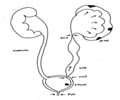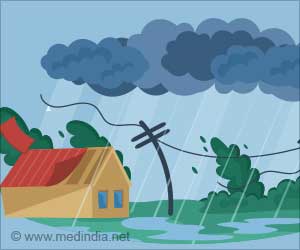Air pollution can be directly responsible for long term kidney diseases, increasing levels of dust and smoke can disrupt the healthy kidney function

‘Long term exposure to air pollution is a significant risk factor for the development and progression of kidney disease."’





The Washington University team, in collaboration with scientists at the Veterans Affairs' Clinical Epidemiology Center, culled national VA databases to evaluate the effects of air pollution and kidney disease on nearly 2.5 million people over a period of 8.5 years, beginning in 2004. The scientists compared VA data on kidney function to air-quality levels collected by the Environmental Protection Agency (EPA) as well as the National Aeronautics and Space Administration (NASA).The EPA derived its data from land-based air-monitoring stations across the U.S. The findings suggest that 44,793 new cases of kidney disease and 2,438 new cases of kidney failure may be attributed to levels of air pollutionthat exceed the EPA's threshold of 12 mg per cubic meter of air, which is the highest level of air pollution considered safe for the public, as set by the Clean Air Act of 1990 and updated in 2012. The study is published in the Journal of the American Society of Nephrology.
"Data on the relationship between air pollution and kidney disease in humans has been scarce," said Ziyad Al-Aly, MD, the study's senior author and an assistant professor of medicine at Washington University. "However, once we analyzed the data, the link between air pollution and the development of kidney disease was clear."
Fine particles can damage the kidneys in the same way they damage other organs such as the heart and lungs.Airborne and invisible, microscopic pieces of dust, dirt, smoke, soot and liquid droplets often become destructive when they enter the bloodstream. The kidneys filters this blood, and these harmful particles can disrupt normal kidney function.
The study found that even low levels of particulate matter may adversely affect the kidneys. And those adverse effects increase as pollution levels increase. "The higher the levels of air pollution, the worse it is for the kidneys," said Al-Aly, who is also the VA's director of clinical epidemiology in St. Louis. "However, no level is completely safe. Even at relatively low levels, there was a relationship between particulate matter concentrations below the EPA thresholds and kidney disease."
Advertisement
Over the years, unsafe levels of outdoor air pollution have decreased in the US. Still, more than half of the US population lives in areas -- from industrialized big cities to farming communities to coal-mining towns -- with unhealthy levels of outdoor air pollution, according to a 2016 study by the American Lung Association.
Source-Eurekalert














